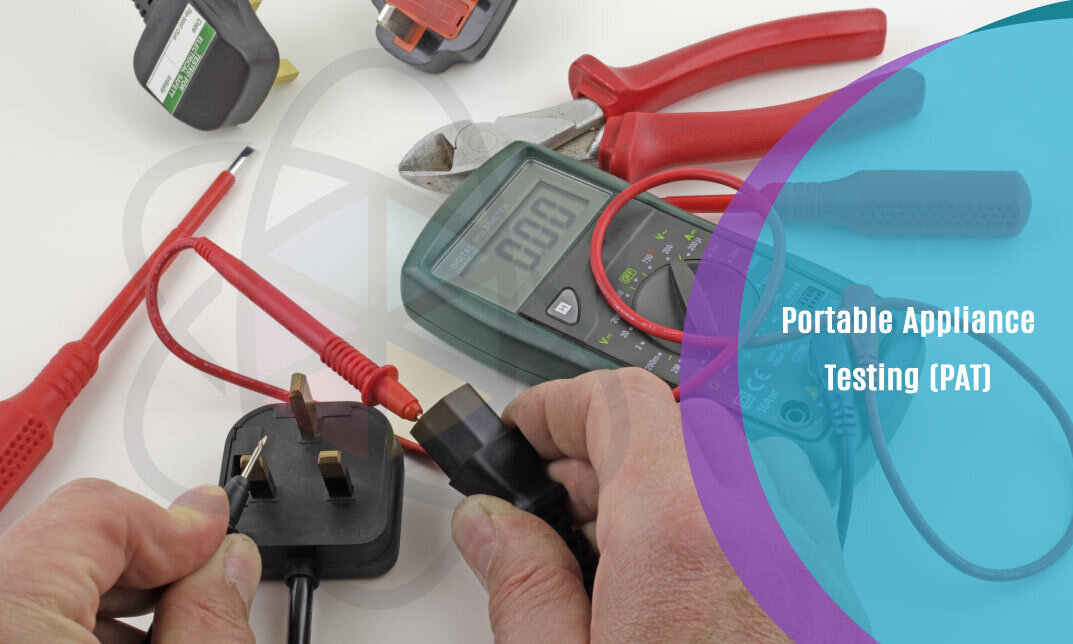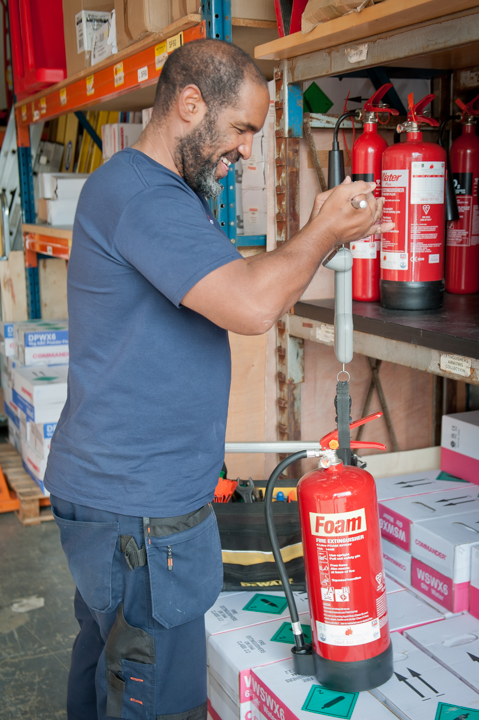Top 10 Tips On How To Establish The Regularity Of Testing For PAT in Redditch
In the UK, determining the correct interval for Portable Appliance Testing is a critical challenge. Contrary to widespread misconception, there is no mandated statutory interval–such as an annual requirement–specified in the Electricity at Work Regulations 1989. Regulation 4(2) instead imposes an obligation to maintain electrical systems in order to prevent danger. This legal duty is placed on the employer or the responsible person who must establish a maintenance regime that is suitable through a structured assessment of risk. Health and Safety Executive has endorsed this risk-based method, which moves away blanket testing schedules and mandates a justifiable, documented explanation for all inspection and tests intervals. The frequency of testing must be determined proactively by evaluating each piece of equipment and its environment. Users, past history and the previous use are also taken into consideration.
1. Risk Assessment is the absolute priority
The frequency of testing cannot be prescribed by law. It must instead be determined by an adequate and suitable risk assessment carried out by the dutyholder. The PAT program is based on this assessment. This document must include all factors which could make an appliance dangerous and how often the appliance should be inspected or tested to minimize that risk. HSE inspectors will look for this assessment, and they will compare it to the conclusions. A testing schedule without this assessment is potentially non-compliant.
2. Key Factors Influencing Testing Intervals
In order to establish a frequency that is acceptable, the risk assessment must evaluate and consider several factors. These include: Type of Equipment: Class 1 appliances (e.g. toaster ovens, kettles), which are earth-dependent, require more frequent checks than Class 2 (double-insulated appliances). The environment: An adverse setting (such as a construction site or workshop) requires more frequent testing than an office. Equipment that is used by employees who are trained may require less formal testing. This will be the case for equipment that is used by untrained or public staff. Appliance Construction: Equipment with a rigid cable may have a lower level of risk than equipment that has flex cables. Previous History: An appliance with a record of faults will require more frequent checking.
3. Formal visual inspections: Their critical role
Formal visual inspections are a legally valid part of the maintenance regime and are often more important than combined inspection and testing. They can detect most faults including cable damage, loose connectors, casing damages, and contamination. In many cases, for low-risk appliances and environments (e.g. a desktop computer at an office), all that may be required is a formal inspection by a person with the necessary expertise. No need to perform routine electronic tests. Risk assessment also determines the frequency of these formal checks.
4. User Checks and First-Line Maintenance
Checking the users is the first step in any formal process. The dutyholder should ensure that users are encouraged by the dutyholder to perform a simple pre-use inspection, looking for obvious signs such as frayed cords, burn marks, and loose parts. Even though it's not recorded in the formal PAT systems, promoting an awareness culture among users is important for a holistic risk based approach. It can also help identify any problems that may arise between scheduled formal checks.
5. Guidance from the IET Code of Practice
Although not a legal document, the IET Code of Practice offers essential guidance about recommended initial frequency. It provides a table that suggests intervals for equipment in different environments (e.g. industrial, commercial and public). This table can be used by dutyholders to begin their risk assessment. This table might recommend 3-monthly inspections of equipment at a construction site, but 24-monthly for the IT equipment used in offices. These initial recommendations will be revised based on the actual experience.
6. The Concept of "Result-Based" Frequency Scheduling
In order to be truly sophisticated and compliant, future testing frequency should be adjusted based on previous results. If an appliance, or a category of appliances, consistently passes its tests without fault over several years, the risk assessment can be reviewed to justify extending the testing interval. If a specific type of appliance fails frequently, the testing interval should be reduced. The authorities who enforce the law are highly supportive of this dynamic, data-driven approach.
7. New Appliances & Equipment
One common myth is the idea that new equipment should not be tested. Although it may not be necessary to perform a formal combination test prior to first use, an official visual inspection must still be performed in order for any transit damage and for the correct wiring on the plug as well as the suitability of the product for the UK market. The risk analysis will determine when to test new equipment. It will be integrated into the maintenance schedule.
8. Renting or Borrowing equipment
The PAT System must include equipment brought onto the premises. For example, hired tools, or equipment used in contracting. It is the dutyholder's responsibility to make sure that it is safe for use before using. Such equipment is usually subject to conservative risk assessments, which require an inspection and testing immediately before the first use.
9. Documenting the Justification for Frequencies Chosen
Documentation is used to demonstrate compliance. The risk assessment should not only include the frequency chosen for each type appliance, but also document the reasoning behind this decision. This document serves as proof of "due diligence." This document should list the factors to be considered (environment type, user, and equipment type), as well as, if appropriate, reference the IET Code of Practice.
10. Regular Review and Adjustment of Intervals
Documents like the risk assessment or the frequency of testing that it prescribes are dynamic. Regulation 4 of Electricity at Work Regulations 1988 requires continuous maintenance. The dutyholder has to review the risks and the effectiveness testing intervals at regular intervals (e.g. once a year) or whenever there is a significant change. This ensures that the system remains proportionate and effective. Take a look at the recommended Redditch fixed electrical testing for blog tips.

Top 10 Tips On Certification And Qualifications For Fire Extinguisher Servicing in Redditch
The service of fire extinguishers in the UK is governed under an established framework to ensure competency, safety and compliance. As with other professions that require licensing from the state and certification, it is the obligation of the "Responsible individual" (under the Regulatory Reform (Fire Safety) Order) to choose a competent provider. Knowing the distinctions between certifications and qualifications is not just an issue of technicality, but also a crucial part of due diligence. There is a broad variety of providers, ranging including highly accredited firms to individuals, making it vital to know the meaning and value of different certifications. If you choose a technician or a company that lacks the necessary qualifications, your insurance could be invalidated, they will not meet legal requirements and, even more importantly the property and workers could be left in utter danger. This guide highlights the top ten essential aspects of certificates to ensure that you select the right partner in fire security.
1. The Gold Standard – Third-Party Certification Accredited by UKAS (BAFE SP101).
The most important certificate is the registration of an organization to the BAFE scheme SP101. BAFE (British Approvals for Fire Equipment), is an independent registration authority. The SP101 scheme is designed specifically for the care and maintenance of portable fire extinguishers. The UKAS (The United Kingdom Accreditation Service) the only accredited body in the country, has accredited the scheme. This means that the scheme as a whole has been tested thoroughly against international standards. Accredited by the UKAS, a BAFE SP101 certificate is the highest possible tangible proof of a business's competence. It verifies that the company's workers, techniques equipment, as well as quality management systems are regularly reviewed to ensure that they are in constant compliance with British Standards.
2. The Alternative Benchmark is FIRAS certification.
FIRAS, or the Fire Industry Association Recognition and Accreditation Scheme (FIA), is another UKAS certified certification scheme. It's operated by Fire Industry Association (FIA). It is a direct equivalent to BAFE SP101 in terms of quality and credibility. FIRAS certification gives the same assurance that an organization's conformity to the relevant standards, which includes BS 536-3. FIRAS or BAFE certification is a proof of competence and compliance for any responsible person. The main thing to consider is the UKAS certification of the scheme itself.
3. The Foundation: Conformity to the BS 533-3 in Redditch
It is vital to prove conformity with British Standard BS 5306-3 :2017 to be able to qualify or to certify. This is the most comprehensive guide for fire extinguisher maintenance. The code of practice must be adhered to by skilled technicians. It defines the requirements for monthly inspections, basic annual services, extended 5-year service for extinguishers constructed of powder, water or foam, as well as an overhaul every 10 years for CO2 units. This compliance can be audited and confirmed through certifications such as FIRAS and BAFE. Ask a business how they adhere to this standard when you evaluate their work.
4. Individual Technician Competence Individual Technician Competence: The FIA Units of Competence
Individual technicians perform the job. The FIA Units of Competence are the most recognized individual qualifications. They are nationally recognized courses that are assessed against National Occupational Standards. The key units consist of:
FIA Unit 001 Maintenance of portable fire extinguishers (Core module)
FIA 010: Modernization of portable fire extinguishers.
A competent technician is required to possess at least FIA Unit 011. Technicians who perform extended services (e.g. 5-year discharges) should also hold Unit 010. Find out about potential providers' particular qualifications for technicians.
5. The Role of Trade Associations (FIA and BAFE) in Redditch
The membership of an organization that is professional like the FIA or BAFE, is not an equivalent of accreditation. It's possible for companies to be a part of these associations without having their technical schemes accredited. Membership in these bodies shows commitment to the profession, and gives access to advice regarding best practices. However, it does not guarantee competence. Always seek out the specific technical scheme certificate (e.g. BAFE SP101) instead of relying on general membership logos.
6. Public Liability and Professional Indemnity Insurance in Redditch
A reliable service provider will not be compromising in terms of insurance. Public Liability Insurance is required (e.g. PS5m+) for accidental damage caused to your home. Professional Indemnity Insurance will also cover any errors made in the work they perform or in the guidance provided. The certification of the company requires that they have insurances. It's best to inquire their proof of insurance before you employ their services.
7. Manufacturer-Specific Training
Although BS 5306-3 is applicable to all extinguishers, manufacturers may use various models, valve mechanisms and recharge process. A highly qualified technician will often undergo manufacturer-specific training. This is especially important for more uncommon or complex extinguisher types like cleaner or wet chemical systems. The additional training will ensure that the technician is able to service all equipment on your premises in a safe and efficient manner without voiding any manufacturers warranties.
8. The Auditing Process: How Certification is Maintained in Redditch
It is vital to recognize that certifications are not one-time prizes. BAFE and FIRAS Certified businesses are inspected each year by certified auditors. These audits occur without notice and consist of conducting interviews with technical staff and monitoring the work being done on site. These certifications have their value because they are continuously scrutinized by external parties. This guarantees that the competency of technicians is not only evaluated at a specific point in time and then maintained.
9. The "Competent Person", vs. "Skilled Person".
There is an important legal distinction. According to the Fire Safety Order, equipment must be maintained by a "competent" individual. In accordance with the law of the land it is a person who has the necessary education, skills, experience, and other attributes to take the measures required. The term "skilled tradesperson" is someone who is physically able to complete the task. An extinguisher technician who is certified must have both – the capacity to complete a task and a thorough understanding of the rules, standards and risk involved.
10. Due Diligence: Verifying Claims and Certificates
The responsibility to verify qualifications rests with the responsible person. Simply seeing the logo of a company on an office van or a website isn't enough.
Verify online: The BAFE and FIA both have an online directory where you can find a specific business using the name. This will confirm the status of their certification. in Redditch
Request certifications: A legitimate company will be glad to provide copies of their BAFE or FIRAS certification as well insurance documents and proof that their employees have FIA qualifications. in Redditch
Verify Expiry Days: Make sure that all certifications, insurance policies and other documents are up to date. in Redditch
This process of verifying is the primary defense against a service that is not qualified. It is also a part of your due-diligence. Check out the best Redditch fire extinguisher service for blog examples.





